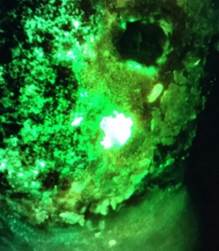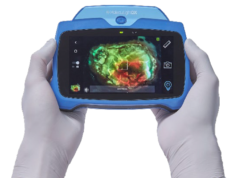
The largest mobile wound care provider in the US Midwest, Wound Care Plus, has adopted the MolecuLight i:X point-of-care imaging device (MolecuLight) to be included as part of its standard of care services offered to the long-term care and extended care markets.
Long-term care (LTC) facilities have a disproportionately high rate of wounds and related infections compared to the general population. Skin and soft tissue infections are the third most common infection found in this care setting, with a high incidence rate of up to 2.1 cases/1,000 resident days. Often, infections develop in these wounds due to delayed detection of high bacterial loads coupled with an immunocompromised population suppressing signs and symptoms of infection. Improving the detection of clinically significant levels of bacteria may limit the development of invasive or systemic infection in this vulnerable patient population.
“After a rigorous evaluation of our technology, we are thrilled to announce that Wound Care Plus has adopted the MolecuLight i:X as a standard-of-care to support their clients in long-term care and extended care facilities across 14 states”, says Anil Amlani, MolecuLight’s CEO. “This is yet another example of how the MolecuLight i:X device is complementing the clinical decision-making of wound care professionals—and ultimately helping to improve clinical outcomes within long-term care and extended care facilities”.
“Access to quality wound care is imperative in the long-term care and extended care setting,” says Martha R Kelso, founder and chief executive officer of Wound Care Plus. “We are often called into long-term care and extended care facilities to treat chronic non-healing wounds on clients with multiple major comorbidities and polypharmacy. This is usually after multiple failed courses of standard-of-care treatment. Our most vulnerable clients deserve the best care and resources we can offer. Having better diagnostic tools and advanced procedures improves our success in healing wounds, and reduces the need for amputations or premature end of life scenarios.
“Detecting bacterial presence while at the client bedside using the MolecuLight i:X has transformed how we care for our clients’ wounds. There is no guesswork, and no waiting on cultures to detect bacterial burden in the wound. The information we obtain on wound fluorescence has led to treatment plan changes in over 80% of wounds assessed. We often use sharp debridement to remove the bacteria and non-viable tissue, without reaching for antibiotics. Imaging with the MolecuLight i:X provides immediate information that helps us know if the bacteria was effectively removed or if additional treatment is needed.”
The MolecuLight i:X will become a standard point-of-care tool to be used by Wound Care Plus’s advanced wound consultants across all of its operations in Arkansas, Colorado, Florida, Georgia, Illinois, Iowa, Kansas, Missouri, Nebraska, New York, Ohio, Oklahoma, Texas, and Wisconsin, and will provide real-time insights on hundreds of thousands of clients’ wounds in long-term care and extended care facilities. Figure 1 shows a MolecuLight i:X image of a Wound Care Plus client’s wound captured at the point-of-care. Cyan fluorescence was observed in the image of the wound whose subsequent microbiology indicated the presence of Pseudomonas. This real-time information supported the advanced wound consultant’s management of the wound, including the decision to further debride the wound to remove the worrisome bacteria, and not prescribe antibiotics.
“When we are able to eliminate antibiotics, we prevent unnecessary debilitating side effects from harming our vulnerable clients due to these medications and stop contributing to the multi-drug resistant organism that is rampant in healthcare. By adopting the MolecuLight i:X point-of-care imaging device for our aging and aged populations living with a chronic wound, it is a major accomplishment that will assist in the pathway to wound resolution”, affirms Kelso.
The MolecuLight i:X imaging procedure has a reimbursement pathway that includes two CPT codes applicable in the long-term care and extended care setting for physician work to perform “fluorescence wound imaging for bacterial presence, location, and load”.











